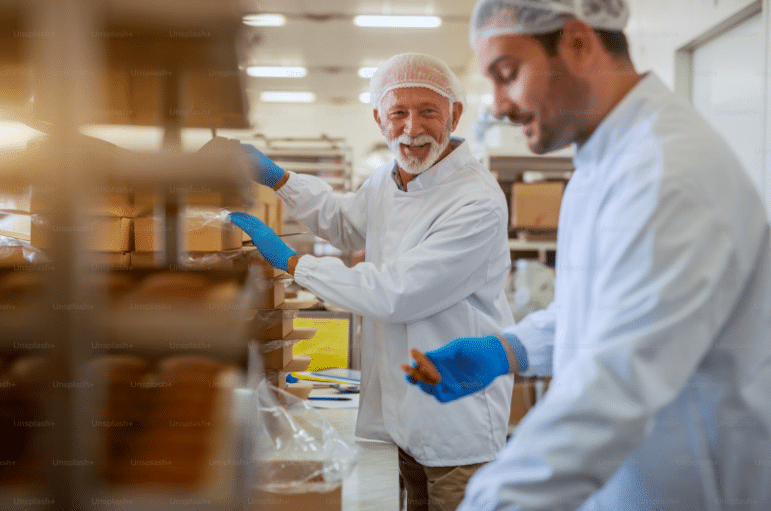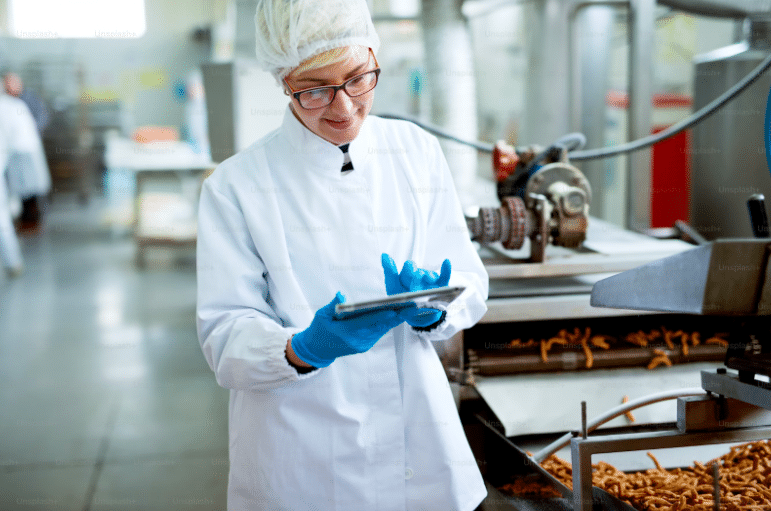What is Food Safety
According to the CDC, 1 in 6 Americans get sick and 3,000 people die from foodborne diseases per year. The statistics paint an important picture about the importance of food safety. To reduce and prevent such outcomes, food safety in the workplace must be a priority that is closely and consistently monitored through food inspection and internal oversight. What is food safety and how can you ensure it’s properly handled and managed?
We’re going to define the term, cover the basics, and share some helpful tips to optimize your food safety practices and processes.
Food Safety: A Definition
Food safety refers to the science, discipline, and methods executed to handle, prepare, and store food in order to prevent foodborne illnesses and contamination.

What are the 5 Basics of Food Safety?
Regardless of the food you’re producing, manufacturing, or distributing, there are 5 food safety rules to help ensure food safety, namely:
-
Clean Food
For food handlers, personal hygiene is step one. This means that if you’re working with food, it’s imperative to wash your hands with soap and water for at least 20 seconds before and after touching food, going to the bathroom, sneezing, eating, coughing, etc. When dealing with foods that are ready-to-eat, it’s recommended to wear gloves. Along with personal hygiene, all surfaces, utensils, and dishes that come into contact with food should be thoroughly cleaned after use.
-
Separate Raw and Cooked Food
When working with food, you must separate raw meats, seafood, poultry, and eggs from other food within your environment. If any raw meat has touched a surface or dish, never place other food on the same dish without sanitizing or disinfecting it.
-
Store Food at Safe Temperatures
Refrigerators and freezers should be kept at 40º F or lower. Perishables, such as meat, poultry, seafood, and eggs must be placed within the fridge or freezer within two hours of it being cooked or bought. Avoid thawing foods at room temperature. Instead, utilize the fridge, microwave, or a bowl with cold water.
-
Use Safe Water
Clean water is required to properly wash food. If the water you have available isn’t safe to drink, then treat it before using it to cook or clean with.
-
Cook Food Fully
Cook temperatures are critical for food safety and to make sure that food is safe to consume. Minimum cook temperatures are required to remove any harmful bacteria. A food thermometer can assist in determining food temperature during the cooking process.
What and Who is Involved in Food Safety?
The question of “Why is food safety important?” may have a more obvious answer than who is responsible for it and how.
Improper food handling results in diseases, hospitalization, and in the very worst cases, death. Since it’s truly a matter of life and death (along with a business’ reputation), training food handlers is absolutely necessary.
Food handling and food safety examples involve all operations that take place with direct contact to food, including:
- Packaging
- Storage
- Preparation
- Food equipment operation
- Cooking
- Cleaning
- Hygiene (food and personal)
Ultimately, it’s up to the business leaders and every food worker to protect the health of its customers and employees from any foodborne diseases or related injuries. Business owners and managers must constantly train, monitor, and evaluate their food safety procedures.
How to Train Food Workers
Food safety all begins with knowledge and continues with food inspection.
There are extensive resources available to help train food workers, along with the skills and experience they gain from the job. A few useful methods to keep food workers up-to-date with what they need to know include:
Visual Aids
With so much on a food worker’s plate (no pun intended), the basics can be easily forgotten or overlooked. That’s where visual aids, such as food safety posters, can come in handy. From checklists to simple illustrations, you can keep the most important information at the top of food safety workers’ minds.
Training Programs
It’s a good idea to provide free or paid training courses so food workers can gain certification upon completion. Some programs require a culminating exam to provide certificates or permits.
Food Safety Management Systems and Technology
Food safety management systems track food workers’ progress and involve the use of machine learning, automation, and artificial intelligence to monitor tasks. Digital solutions help maintain proper internal control, oversight, and smart notification systems so that food workers are immediately aware of any issues. Along with food safety management systems, businesses are making use of speech-powered solutions like aiOla.
aiOla’s speech-enabled technology offers a new way of getting work done with nothing more than speech. By sharing your current process, aiOla will create a digital workflow in which food workers can run through while speaking into any device of their choice. This allows them to work hands-free, safely, and more efficiently.

aiOla’s Role in Food Safety
With the fast-pace of food manufacturing and related businesses, you want to avoid any food safety measures from slipping through the cracks. Not only is food a primary concern, but so is worker safety as employees operate heavy and potentially dangerous machinery within their day-to-day processes.
As a result, it’s best for them to be able to keep their eyes up and their hands-free. With aiOla, this is possible, thanks to speech AI!
aiOla understands any language, business-specific jargon, and accent, while performing with utmost accuracy in any acoustic environment, which means that your food workers can execute their mission-critical tasks and food inspection with words.
In turn, your business can gain advantages, such as:
- Increased production uptime
- Real-time oversight
- Data collection and connection
- In-depth insights
- Safety and compliance
- Live notifications and alerts
Hands-free operations and real-time data means that you can minimize accidents, reduce the reliance on paper-based processes, and gain visibility into how a process is running for top-notch internal control.
You can truly transform the production floor for the better without disrupting your current processes. By augmenting your team’s capabilities, everyone benefits– from food workers to management to your customers.
Wrapping Up
Food safety and food inspection are required to protect people from illness and injury. Training, oversight, and technology can all play a role in maintaining the required food safety measures and optimizing your business’ operations.
If you’re interested in learning more about how aiOla’s technology can help, we invite you to schedule a call with one of our experts.


